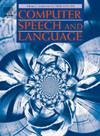日常生活中的隐私保护对话分析:探讨隐私与效用的权衡
IF 3.4
3区 计算机科学
Q2 COMPUTER SCIENCE, ARTIFICIAL INTELLIGENCE
引用次数: 0
摘要
日常生活中的录音为与健康相关的应用程序提供了有价值的见解,例如分析会话行为作为社会互动和福祉的指标。然而,这些录音需要对所有相关人员的讲话内容和说话人的身份进行隐私保护。本文研究了一种低成本的扬声器匿名化技术,通过在频率和时间域结合平滑和子采样来实现功率受限录音设备的隐私保护功能。使用语音识别和说话人验证系统来评估隐私保护,而使用语音活动检测和说话人拨号模型来评估分析对话的效用。评估结果表明,将说话人匿名化与上述平滑和子采样相结合可以保护语音隐私,尽管会牺牲实用性能。总的来说,我们的隐私保护方法提供了隐私和实用之间的各种权衡,反映了不同应用程序场景的需求。本文章由计算机程序翻译,如有差异,请以英文原文为准。

Towards privacy-preserving conversation analysis in everyday life: Exploring the privacy-utility trade-off
Recordings in everyday life provide valuable insights for health-related applications, such as analyzing conversational behavior as an indicator of social interaction and well-being. However, these recordings require privacy preservation of both the speech content and the speaker’s identity of all persons involved. This article investigates privacy-preserving features feasible for power-constrained recording devices by combining smoothing and subsampling in the frequency and time domain with a low-cost speaker anonymization technique. A speech recognition and a speaker verification system are used to evaluate privacy protection, whereas a voice activity detection and a speaker diarization model are used to assess the utility for analyzing conversations. The evaluation results demonstrate that combining speaker anonymization with the aforementioned smoothing and subsampling protects speech privacy, albeit at the expense of utility performance. Overall, our privacy-preserving methods offer various trade-offs between privacy and utility, reflecting the requirements of different application scenarios.
求助全文
通过发布文献求助,成功后即可免费获取论文全文。
去求助
来源期刊

Computer Speech and Language
工程技术-计算机:人工智能
CiteScore
11.30
自引率
4.70%
发文量
80
审稿时长
22.9 weeks
期刊介绍:
Computer Speech & Language publishes reports of original research related to the recognition, understanding, production, coding and mining of speech and language.
The speech and language sciences have a long history, but it is only relatively recently that large-scale implementation of and experimentation with complex models of speech and language processing has become feasible. Such research is often carried out somewhat separately by practitioners of artificial intelligence, computer science, electronic engineering, information retrieval, linguistics, phonetics, or psychology.
 求助内容:
求助内容: 应助结果提醒方式:
应助结果提醒方式:


